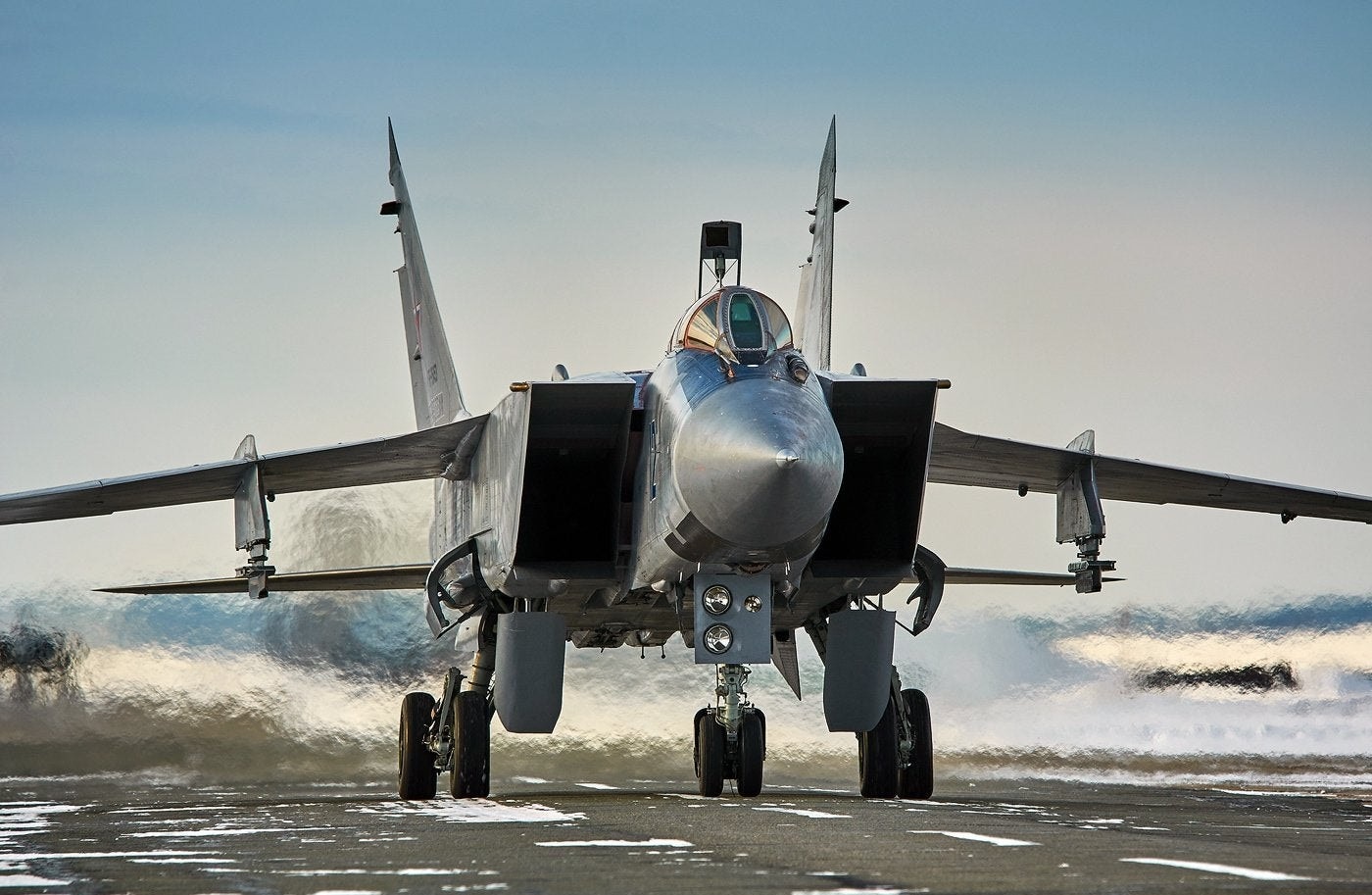Just days after Russian warships fired warnings shots at the Royal Navy’s HMS Defender in the Black Sea, vessels from the Russian Navy conducted maneuvers in the Mediterranean Sea on Friday. The Russian warships were joined by two MiG-31K fighters that Moscow claimed were capable of deploying Kinzhal hypersonic missiles.
“In the course of the joint maneuvers of the Russian Navy’s standing Mediterranean taskforce and aircraft of Russia’s Aerospace Force that kicked off in the eastern Mediterranean on June 25, the crews of MiG-31K planes capable of employing the latest Kinzhal hypersonic missiles that arrived at the Russian Hmeymim airbase in the Syrian Arab Republic the other day have started accomplishing the tasks of mastering the airspace in the maritime zone,” the Russian Ministry of Defense said in a statement to Tass.
The Mikoyan MiG-31K is a modified variant of the MiG-31BM capable of carrying the hypersonic Kh-47M2 Kinzhal ALBM. Reportedly ten of the aircraft have been modified to date, but with those modifications the aircrafts’ capability to fire air-to-air missiles was removed. As a result, the MiG-31K can only serve in the sole role of an attack aircraft.
According to Tass, the pair of MiG-31Ks that took part in Friday’s exercise recently arrived at the Russian Hmeymim airbase in Syria, following the upgrade and the extension of the second runway at the facilities. That included a complete replacement of the runway’s surface as well as the installation of new lighting navigational facilities and radio-technical equipment. The base is located near the port city of Tartus, and The Washington Post reported that it is the only such facility that Russia currently has outside the territory that consisted of the former Soviet Union.
Response to the Royal Navy
The Kinzhal is a hypersonic missile that can fly at a reported ten times the speed of sound and has a range of up to 2,000 kilometers or about 1,250 miles.
The deployment of the warplanes armed with the weapons – which have been described as “carrier killers” – was likely meant to send a message to the Royal Navy as its flagship aircraft carrier HMS Queen Elizabeth, which has been operating in the Mediterranean Sea this week. The carrier recently took part in its first combat sortie, when Royal Air Force and the United States Marine Corps Lockheed Martin F-35Bs launched from the carrier to strike ISIS positions in Iraq.
The MiG-31K attack aircraft wasn’t the only Russian warbirds to take part in Friday’s drills.
“Tu-22M3 long-range bombers have also performed their training flights over the Mediterranean Sea,” the Defense Ministry added.
Friday’s naval exercises involved a total of five Russian warships, including the missile cruiser Moskva, the frigates Admiral Essen and Admiral Makarov, and the submarines Stary Oskol and Rostov-on-Don. The warships were joined by aircraft from Russia’s Aerospace Force including Tu-142MK and Il-38 anti-submarine warfare planes, Tu-22M3 long-range bombers and MiG-31K fighters, the ministry specified.
“The hypothetical enemy with the designated characteristics was simulated electronically by the shipborne armament control system,” the statement added.
That “hypothetical” enemy was probably described as looking a lot like a Royal Navy aircraft carrier and an airwing of fifth-generation fighters.
Peter Suciu is a Michigan-based writer who has contributed to more than four dozen magazines, newspapers and websites. He regularly writes about military small arms, and is the author of several books on military headgear including A Gallery of Military Headdress, which is available on Amazon.com.

